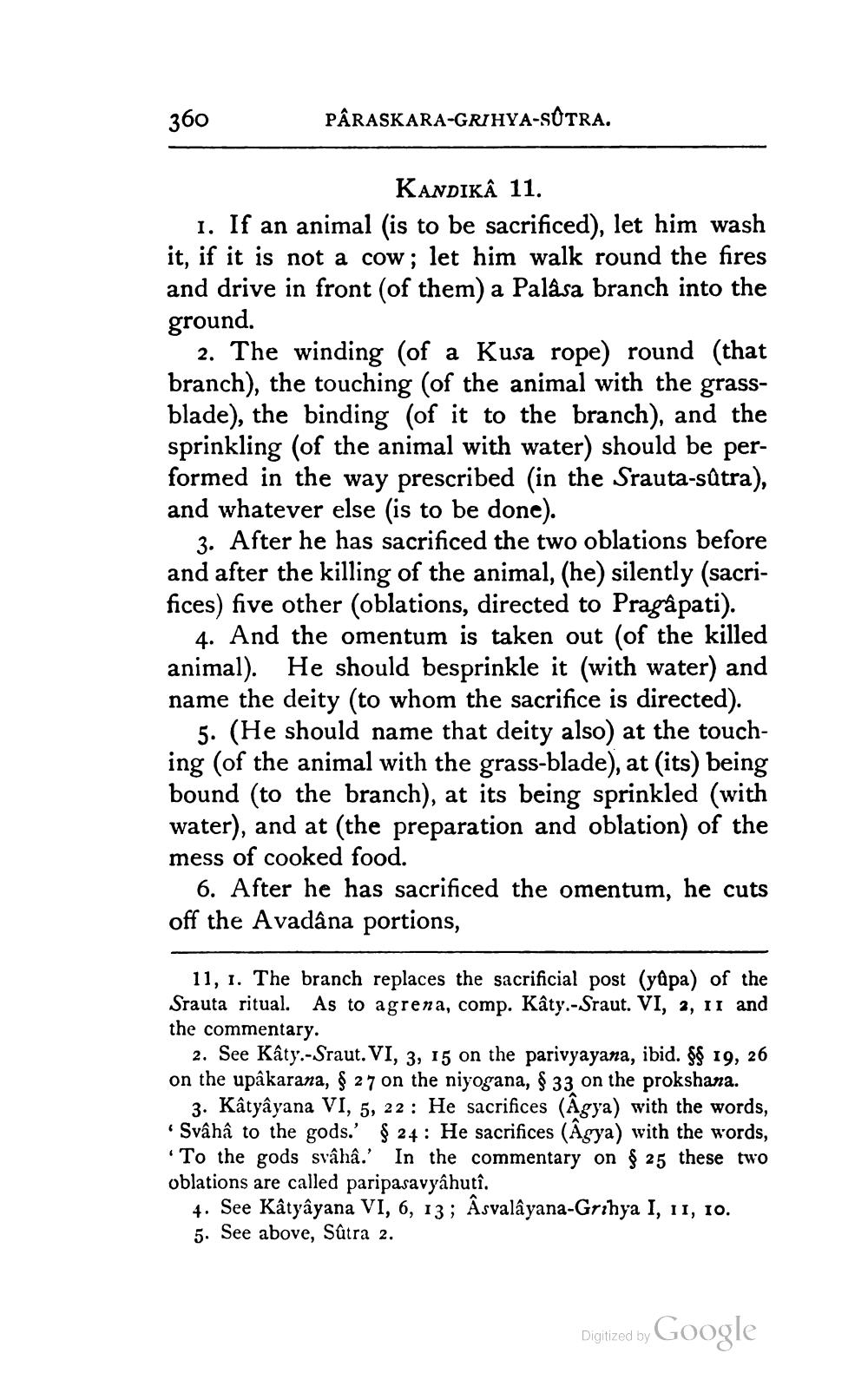________________
360
PÂRASKARA-GRIHYA-SOTRA.
KANDIKÂ 11. 1. If an animal (is to be sacrificed), let him wash it, if it is not a cow; let him walk round the fires and drive in front (of them) a Paläsa branch into the ground.
2. The winding (of a Kusa rope) round (that branch), the touching (of the animal with the grassblade), the binding (of it to the branch), and the sprinkling (of the animal with water) should be performed in the way prescribed in the Srauta-sútra), and whatever else is to be done).
3. After he has sacrificed the two oblations before and after the killing of the animal, (he) silently (sacrifices) five other (oblations, directed to Pragâpati).
4. And the omentum is taken out (of the killed animal). He should besprinkle it (with water) and name the deity (to whom the sacrifice is directed).
5. (He should name that deity also) at the touching (of the animal with the grass-blade), at (its) being bound (to the branch), at its being sprinkled (with water), and at (the preparation and oblation) of the mess of cooked food.
6. After he has sacrificed the omentum, he cuts off the Avadâna portions,
11, 1. The branch replaces the sacrificial post (yllpa) of the Srauta ritual. As to agrena, comp. Kâty.-Sraut. VI, 2, 11 and the commentary.
2. See Kâty.-Sraut. VI, 3, 15 on the parivyayana, ibid. $$ 19, 26 on the upâkarana, § 27 on the niyogana, § 33 on the prokshana.
3. Kâtyâyana VI, 5, 22 : He sacrifices (âgya) with the words, "Svâhâ to the gods.' § 24: He sacrifices (Âgya) with the words, "To the gods svâhâ.' In the commentary on § 25 these two oblations are called paripasavyâhutî.
4. See Kâtyâyana VI, 6, 13; Âsvalâyana-Grihya I, 11, 10. 5. See above, Sûtra 2.
Digitized by Google




